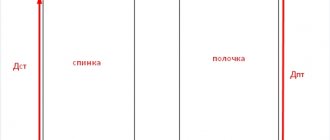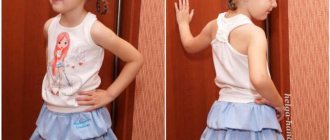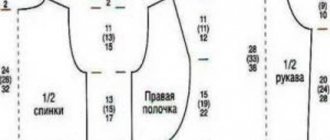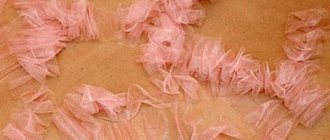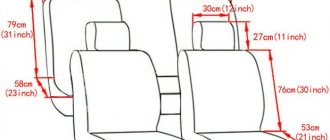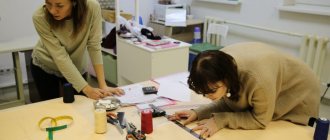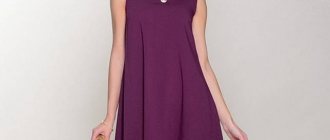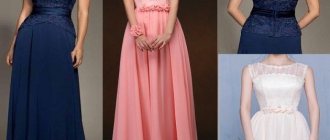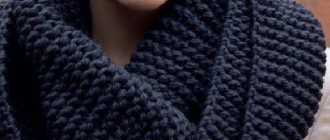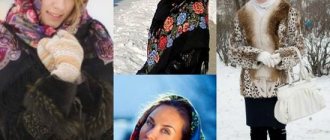What does a cowl collar look like?
It’s interesting that in the post-Soviet school of clothing design, a “collar” is a draped or slightly free-falling stitched collar. Literally speaking, the word “collar” means a product worn around the neck. This can be either a folded stand-up collar or a wide, voluminous, knitted or knitted collar.
Tailors and couturiers in other countries are giving collar workers more opportunities for “self-expression”: now by collar they mean any kind of drapery in the neck area. In the modern world, a collar refers to both a high collar and fabric folds falling onto the chest, while the height of the collar also varies significantly. This is all directly related to the history of the “cowl neck”, which we will briefly discuss below.
A brief excursion into the history of the clamp
The word “cowl” (from English - “hood”) came to us from Latin. Today's collars, in their image and likeness, resemble the hoods-capes of Catholic monks from the Middle Ages. The modern version of such capes involves a conventional, beautifully draped hood hanging from the head and creating coattails on the neck, shelves and back.
That is why in the English-speaking world, a collar is considered both the collar itself and the method of draping the neck of the product, but in the Russian language these concepts are separated.
In post-Soviet countries, coattails cut out in one piece along the front are called “swings,” and a short collar, strictly speaking, is called a “collar.”
At the beginning of the twentieth century, the Frenchwoman Madeleine Vionnet invented the bias cut, which she actively used to create designer dresses with flowing collars. Thanks to her, ten to twenty years later, sliding and enveloping silhouettes with a draped neckline won the sympathy of fashionistas.
Openwork collar knitted from cotton threads
Openwork collar with knitting needles
To make such a collar with knitting needles, you will need a pattern diagram, knitting needles No. 2 and No. 2.5, a thin satin ribbon, and simple cotton threads. This model is perfect for both adult fashionistas and children, or rather girls. Let's cast on nine loops on the knitting needles and knit the first row in this way. The first is an edge, then comes a purl, knit, yarn over, another knit and yarn over, then a knit and purl. The edge is knitted from two loops in garter stitch. At the same time, they will be knit in the front rows, and purl in the back rows. You need to finish this row with a knit stitch. All purl rows are performed in the same way as the previous loops, or according to the pattern. In the third row we introduce an increase, which must be done in the following way. To do this, you need to take the thread from the broach with the right knitting needle, turn it over, and then transfer it to the left knitting needle. After this, it must be knitted like a purl.
Next we work according to the pattern and knit eighteen rows. In the next one after that we close off six loops, leaving nine in the work. Now let’s start knitting the pattern again according to the pattern, from the beginning. This order must be repeated until we knit the very last leaf. Having tied it, we close everything. As a result, we only got half of the collar. The second part is also knitted according to the pattern, but in reverse order. Having finished the second half, we sew both along the edge of the first leaves, and put the entire strip on a long knitting needle. On this knitting needle we must knit seven centimeters of a mesh pattern, for which there is a diagram. Next, close everything and thread a thin satin ribbon. After this, you can try on the collar.
Features of cutting and sewing
When creating products with a cowl collar, we recommend adhering to the following recommendations.
- When choosing fabric for sewing, give preference to knitwear. It easily forms neat folds, lies softly in the neckline and practically does not wrinkle.
- Before proceeding directly to cutting the clamp, check whether the head will easily fit into the neck of the finished product. Make sure that the collar fits comfortably, does not pinch and, conversely, does not hang down too much.
- We recommend cutting exclusively on the bias for good stretching of the collar (a product with such a collar will be easy to put on over the head and fit loosely around the throat).
- The cut piece must be subject to heat treatment, which includes steaming with simultaneous stretching - in this way, we form a neat collar and lay a soft lapel.
- Do not iron the collar along the fold line!
- It is most convenient to sew in the collar in parts: first, sew the lower part inside the product, then cover it with the upper edge of the trim.
If you follow these simple rules, your products with a cowl collar will always be beautiful and neat!
Now it’s time for us to move from theory to practice!
